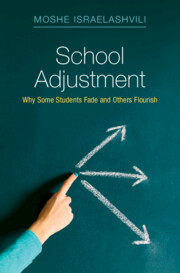Refine search
Actions for selected content:
3387874 results

From Manners to Rules
- Advocating for Legalism in South Korea and Japan
-
- Published online:
- 29 August 2025
- Print publication:
- 07 August 2025

The Arms Trade, Military Services and the Security Market in the Gulf States
- Trends and Implications
-
- Published by:
- Gerlach Books
- Published online:
- 29 August 2025
- Print publication:
- 30 September 2016

Conflict Resolution and Creation of a Security Community in the Gulf Region
-
- Published by:
- Gerlach Books
- Published online:
- 29 August 2025
- Print publication:
- 30 September 2017

The Muslim Theology of Huzn
- Sorrow Unravelled
-
- Published by:
- Gerlach Books
- Published online:
- 29 August 2025
- Print publication:
- 30 August 2018

The Arab States of the Gulf and BRICS
- New Strategic Partnerships in Politics and Economics
-
- Published by:
- Gerlach Books
- Published online:
- 29 August 2025
- Print publication:
- 30 September 2016

Critique of Religious Thought
- English Translation of Naqd al-fikr ad-dini
-
- Published by:
- Gerlach Books
- Published online:
- 29 August 2025
- Print publication:
- 30 November 2014

School Adjustment
- Why Some Students Fade and Others Flourish
-
- Published online:
- 29 August 2025
- Print publication:
- 07 August 2025

Higher Education Investment in the Arab States of the Gulf
- Strategies for Excellence and Diversity
-
- Published by:
- Gerlach Books
- Published online:
- 29 August 2025
- Print publication:
- 31 October 2016

The Future of Labour Market Reform in the Gulf Region
- Towards a Multi-Disciplinary, Evidence-Based and Practical Understanding
-
- Published by:
- Gerlach Books
- Published online:
- 29 August 2025
- Print publication:
- 31 October 2017

Political Reforms in Qatar
- From Authoritarianism to Political Grey Zone
-
- Published by:
- Gerlach Books
- Published online:
- 29 August 2025
- Print publication:
- 01 March 2018

Constantinople and the Bosphorus
- Visions of the Orient
-
- Published by:
- Gerlach Books
- Published online:
- 29 August 2025
- Print publication:
- 31 March 2024
A relational perspective on callous-unemotional traits in early childhood: Maternal sensitivity and child attachment as developmental antecedents
-
- Journal:
- Development and Psychopathology , First View
- Published online by Cambridge University Press:
- 29 August 2025, pp. 1-13
-
- Article
-
- You have access
- Open access
- HTML
- Export citation
Limited yield of SARS-CoV-2 screening in asymptomatic hematopoietic cell transplant and chimeric antigen receptor T-cell therapy patients
-
- Journal:
- Antimicrobial Stewardship & Healthcare Epidemiology / Volume 5 / Issue 1 / 2025
- Published online by Cambridge University Press:
- 29 August 2025, e195
-
- Article
-
- You have access
- Open access
- HTML
- Export citation
Labovian sociolinguistics of literacy: Theoretical, practical, and political developments from 1964-1972 - ERRATUM
-
- Journal:
- Language in Society , First View
- Published online by Cambridge University Press:
- 29 August 2025, p. 1
-
- Article
-
- You have access
- Open access
- HTML
- Export citation
Wireless nation: Infrastructural politics of Tibetan and Mongolian Morse codes in China
-
- Journal:
- Modern Asian Studies , First View
- Published online by Cambridge University Press:
- 29 August 2025, pp. 1-24
-
- Article
-
- You have access
- Open access
- HTML
- Export citation
Marangoni-flow-driven hysteresis and azimuthal symmetry breaking in evaporating binary droplets
-
- Journal:
- Journal of Fluid Mechanics / Volume 1018 / 10 September 2025
- Published online by Cambridge University Press:
- 29 August 2025, A11
-
- Article
-
- You have access
- Open access
- HTML
- Export citation
An Analysis of Anti-Bullying Laws in the United States
-
- Journal:
- Journal of Law, Medicine & Ethics / Volume 53 / Issue 3 / Fall 2025
- Published online by Cambridge University Press:
- 29 August 2025, pp. 467-472
- Print publication:
- Fall 2025
-
- Article
- Export citation
Detecting carotenoids in salt crystals: insights into biosignature detection under Mars-like proton irradiation using in situ and ex situ Raman spectroscopy
-
- Journal:
- International Journal of Astrobiology / Volume 24 / 2025
- Published online by Cambridge University Press:
- 29 August 2025, e20
-
- Article
-
- You have access
- Open access
- HTML
- Export citation
Letter to the editor: Early adversity and inflammation at midlife: the moderating role of internalizing psychopathology
-
- Journal:
- Psychological Medicine / Volume 55 / 2025
- Published online by Cambridge University Press:
- 29 August 2025, e259
-
- Article
-
- You have access
- Open access
- HTML
- Export citation
